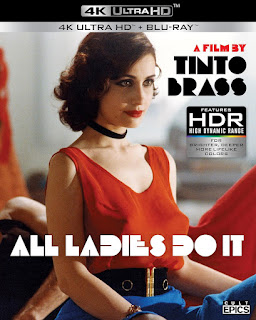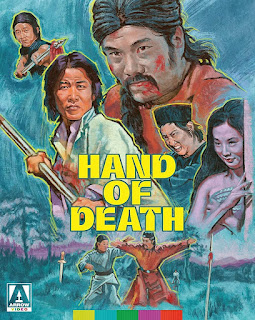The Cat and the Canary
Gathered for the reading of the last will and testament of eccentric recluse Cyrus West, the potential heirs meet up in his decrepit mansion to discover who will inherit the estate and family jewels. Predictably there is some petty jealousy when young Annabelle West is named the sole beneficiary…that is, if she can be proved sane after spending the night. Victims disappear into sliding doors and secret passages while the jewels are ripped right off Annabelle’s lovely neck by a monstrous hand. Is it the escaped mental patient rumored to be on the grounds? Or is blood thicker than water?
Belying the fact that silent cinema is a tedious bore, The Cat and the Canary is a highlight reel of cinematic innovations starting with the opening credits. A series of optical effects (not unlike those used later in Citizen Kane) follows Leni’s unchained camera as it stalks halls filled with billowing curtains and expressionistic shadows, transitioning to a mysterious POV that kicks off the film’s central mystery. It’s a monumental piece of filmmaking…and that’s just the first five minutes. Leni continues to shock and surprise with abrupt zooms and unexpected angles, matched with clever intertitles that emphasize the farcical vibe.
The Cat and the Canary is, after all, a comedy; one that was probably a little too broad and obvious even when released. But the performances are a perfect match for Leni’s visual playfulness. While not the first film in the old dark house genre, it would provide a template for all those that followed, including James Whale’s classic five years later and dozens of copycats that passed off petty criminals as supernatural spooks (1942’s The Hidden Hand really lays it on thick). Still and all, no one has ever topped Leni’s tour de force!
One of the inaugural U.S. releases from Eureka Entertainment – and part of their Masters of Cinema series – they couldn’t have launched with a more impressive title. The beautiful transfer (from a 4K digital restoration) is tinted to match interior, exteriors and night scenes, accompanied by an era-appropriate score by Robert Israel. Extras include a tight 30-minute visual essay that covers all the bases of production along with interviews from two other film historians. These tie in nicely with two new audio commentary tracks and several audio excerpts from the original play. As a touchstone for the development of Universal Horror as we know it, this one isn’t just reference material…it’s a disc you’ll pull out again and again.




Comments
Post a Comment